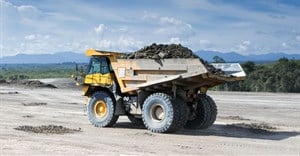Subscribe & Follow
Trending



 Canal+ offer for MultiChoice deemed 'fair and reasonable' by independent boardEchha Jain in Bengaluru and Michal Aleksandrowicz
Canal+ offer for MultiChoice deemed 'fair and reasonable' by independent boardEchha Jain in Bengaluru and Michal Aleksandrowicz

Jobs
- Electronic Workshop Technician Vereeniging
- Oil and Gas Sales Representative George
- Energize - Deputy Editor Johannesburg
Long-term vision needed, says SRK's chairman

Other recently released figures - from Statistics South Africa - showed that mining production dropped almost 6% in the June quarter compared with last year, and the industry shed over 4% of its jobs.
Deeper mines, more challenging ore bodies and recent labour unrest have all been factors in steadily declining productivity, said Dixon, but the sector has been slow in finding sustainable solutions to these challenges.
"The sad fact is that we have been conducting our mining operations in essentially the same way for decades, and somehow expecting our efforts to have a different and better result," he said. "The future of mining will have to be based on more innovative technology, for instance, but our research and development initiatives remain uncoordinated and under-funded."
SA this year slipped again in the World Economic Forum's global competitiveness index, falling three places to 56th out of 144 countries.
Employment falling and wages rising
"In a productive economy, we would expect to see certain trends - such as rising levels of labour utilised alongside wage level increases in line with inflation," said Dixon. "Mining shows the opposite trends, with employment falling and wage increases regularly outstripping the overall consumer price index."
Recent labour disputes on mines have led to more frequent discussions about mechanisation, with Productivity SA highlighting the long-term benefits of mechanised production in the economy: with the higher profits that mechanisation and automation can produce, savings are generated that will be ploughed into new job-creating enterprises.
However, Dixon said that mechanising and automating in conditions of high unemployment creates a dilemma, and he emphasised the importance of steady and long-term implementation of innovation in working practices and technology.
"The logistics systems in our mines are a good example of where we could improve productivity substantially," he said. "The distances from surface to the working faces of our deep-level mines have increased drastically since the 1950s and 1960s, but we have not adapted our supply chain technology sufficiently to address this. We simply lose more and more productive time as workers spend a greater portion of their day travelling to and from the stopes."
While machines and systems are vital to better productivity, so is the health of the workers themselves, he said. To operate at their peak, staff needs to be healthy, well-nourished and well rested; however it is increasingly clear that the living environment around many mines - with large number of workers in informal housing - is not conducive to this level of wellbeing.
"Ill health, fatigue and stress also contribute to accidents, which, in turn, erode the productive hours that staff spends at work - not to mention the resulting work interruptions and regulated stoppages that follow an incident," said Dixon.
He said it was vital for the survival of SA mines that management grasp the productivity nettle with a strategic commitment to develop and implement new ways of working, underpinned by research and active consultation with labour and other stakeholders.








